Opinion
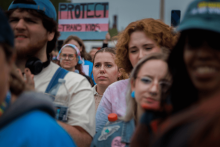
I know some Christians do not fully share my theological convictions about gender and sexuality, but on issues of human dignity and civil rights, the church should be firmly united: Transgender and nonbinary siblings are God’s children made in God’s very image and likeness. Prohibiting lifesaving medical care, tolerating discrimination, or denying someone the ability to use their name is wrong; you cannot deny people those rights because you disagree with their beliefs about gender or sexuality. Christians should be standing in the breach in defense of the full humanity, dignity, and rights of their trans siblings.
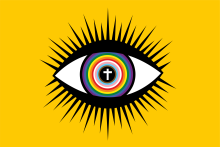
Asexuality and aromanticism describe those whose orientations are often defined by lack and rarity. We’re atypical in that we don’t experience sexual and/or romantic attraction, or when we do, it’s the exception to the rule or under certain conditions. We’re inconvenient to remember — on all sides of the political and religious spectrums.

Historically, there have been many Catholics who have pushed back against gender norms. But like modern conservatives who focus on the outrageous aspects of the Sisters of Perpetual Indulgence while ignoring the group’s tireless work caring for the sick, homeless, and poor, the Catholic hierarchy has also attempted to mute the stories of gender-nonconforming people throughout its history. And in doing so, the church hierarchy has often ignored the acts of mercy so central to Catholic teaching.
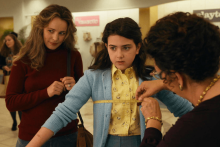
Children are already exploring sexuality and religious skepticism in complex and important ways — so our films and books should, too.
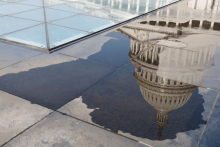
As lawmakers on Capitol Hill argue about the national debt, the Bible verse that’s been on my mind is Proverbs 3:27: “Do not withhold good from those to whom it is due, when it is in your power to act.”
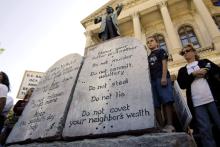
The Senate of my home state, Texas, recently made news for passing three bills designed to bring Christianity into public schools. As I told NewsNation when they interviewed me earlier this week about the proposed legislation, I think this is an example of a government attempting to force beliefs on people. Yesterday, the State House failed to pass a law that would’ve required the Ten Commandments to be displayed in public schools. SB 1515 would’ve required that “a public elementary or secondary school shall display in a conspicuous place in each classroom of the school a durable poster or framed copy of the Ten Commandments.”
Republicans in Texas argued that this move would reinforce essential American identity because America was founded on so-called “Judeo-Christian” principles. According to the Texas Tribune, Republican Lt. Gov. Dan Patrick defended the law by saying, “Bringing the Ten Commandments and prayer back to our public schools will enable our students to become better Texans.”
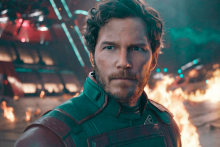
What does it take to survive the wrath of gods? This has been a perennial question for Star Lord, Rocket, Gamora, Drax, Groot, Mantis, Nebula, and the others who have found themselves drawn into the orbit of the Guardians of the Galaxy.

After Title 42 restrictions at the U.S. border ended on May 11, debates about immigration have heated up again — focused mostly on reform, border security, or refugees’ needs.
But the treatment of immigrants is deeply intertwined with religious freedom as well. As a scholar of religious ethics who studies immigration, I am interested in recent cases that highlight growing tensions between immigration policies and religious groups’ commitments to pastoral and humanitarian care.

The new Peacock TV series Mrs. Davis has the most unhinged first 15 minutes of possibly any show I have ever seen. Men burn at the stake, heads roll, water is walked on, blood fountains.

Let’s be clear: Neither Title 42 nor Biden’s new policies meet the biblical standard of “welcoming the stranger,” which for us includes thousands of migrants at the U.S.-Mexico border seeking refuge from violence and extreme poverty.
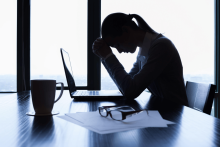
On April 18, the court heard oral arguments in Groff v. DeJoy, a case addressing an employer’s obligation to accommodate religious employees’ requests under federal law. The dispute involves a Christian postal worker who quit his job and sued the U.S. Postal Service after he was unable to find coverage for his Sunday shifts. Current law requires employers to make accommodations for workers’ religious requests only if doing so doesn’t impose more than a minimal cost on their business, known as the “de minimis” standard.
After listening to the oral arguments in the case, I believe it’s very likely the court will overturn the de minimis standard and require employers to accommodate more religious requests.

In short, the gospel demands that the church asks some basic sociological questions to help it navigate difficult social waters. In regard to trans people, our questions should be informed by the work of people like organizer and writer Dean Spade, who wrote the book Normal Life. How does our society, with all its norms, move trans people closer to vulnerability and death, or closer toward security and life?
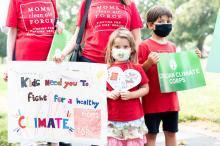
As a mother and teacher, I spent one year researching 50 women — one from each state in the country — who are working toward climate justice. I documented these stories in the book Love Your Mother: 50 States, 50 Stories, and 50 Women United for Climate Justice. What I found in the South were role models on the frontlines of the climate crisis: From the hurricane zone of the Gulf Coast to the urban center of Atlanta, I discovered women who knew how to use their wit, intelligence, faith, and family to fight for their connection to home and the health of those they love.

Unlike many possession stories, The Evil Dead franchise envisions a world without hope of exorcism. The unique version of evil in this franchise calls to mind the cruelty of empires old and new.
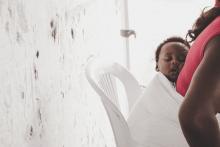
The Bible is unequivocal that we are to “honor” and even “revere” our mothers (Exodus 20:12 and Leviticus 19:3). While it’s a commitment that needs more attention than one Sunday each year, Mother’s Day provides a special day in which we should go out of our way to honor our mothers with words and acts of gratitude and love.
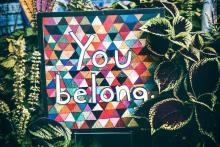
Adoption allows us to bring near to us those who hold in themselves the kingdom of God (Luke 18:16). By invoking the language of “sacramental” here, I am naming the ongoing dialectic between the ordinary and the theological. As a sacramental practice, earthly adoption does not hold the same consequences or eternal import as our salvific adoption in Christ. However, these two realities can speak into one another. This is what a life marked by the sacramental looks like: finding spaces where the ordinary, mundane things of life are instilled with a greater sacred significance of liberation and love; and, in return, point us to divine realities that we are invited to participate in.

In a ceremony that CNN describes as “a symbolic coming together of the monarchy, church, and state for a religious ritual,” King Charles III will vow to uphold the law and the Church of England. Justin Welby, the Archbishop of Canterbury and leader of the global Anglican Communion, will then anoint Charles with oil and place a heavy crown on his head. The crowds surrounding Westminster Abbey will chant, “God save the king.”

Can blowing up a pipeline be a form of nonviolent protest? Director Daniel Goldhaber’s new film, How to Blow Up a Pipeline, makes a strong case in the affirmative — even if the activists at its center could care less about being called “terrorists” by the American empire.

It would appear that most people raised in the church do not, in fact, stay in the church.
In recent years, there’s been an uncomfortable shift in how the topics of marriage and families are being framed. Rather than simply acknowledging marriage and family as moral goods, children and families are frequently put forward as the solution for preserving Christianity amidst its perceived cultural decline.
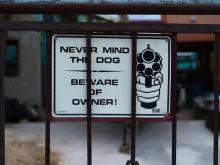
In a nation built on white nationalism, keeping people fearful of the “other” is useful because it keeps up the illusion of law, order, and control — the foundations of white supremacy. Crime protection is now the dominant reason people own guns. Samuel Perry and Andrew Whitehead write in their book Taking America Back for God, that White Christian nationalists tend to want a strong military, capital punishment, and oppose gun control.
Yet again and again, Christians are commanded to welcome the stranger and be not afraid. “Do not neglect to show hospitality to strangers,” the author writes in Hebrews 13:2. “For by doing that some have entertained angels without knowing it.”